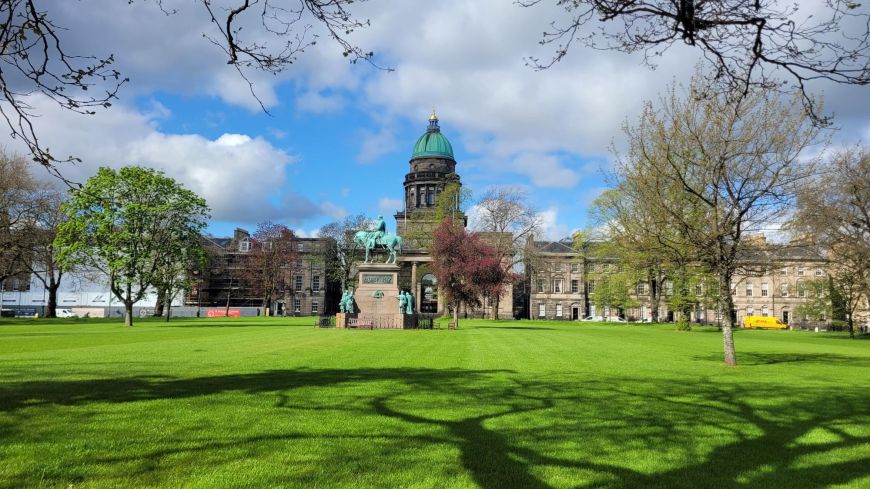
In mid-1700s Edinburgh was a medieval jumble of tall buildings and narrow-winding streets at the foot of Edinburgh Castle. With a population of around 60,000 crammed within the confines of the city walls, Edinburgh was overcrowded, insanitary, and smelly (hence its nickname "Auld Reekie").
"I believe that in no city in the world so many people have so little room," wrote author Daniel Dafoe on a visit to the city.
Livestock wandered the streets and chamber pots were emptied from windows above with a mere warning cry of Gardy loo! (from the French, "Prenez garde a l'eau!").
The partial collapse in 1751 of one of these tenements spurred the City of Edinburgh to finally address Edinburgh's deteriorating living space, with Lord Provost Drummond taking the lead.
In 1766, the City of Edinburgh held a competition to develop 100 or so acres of city-owned land to the North of the Nor' Loch (now Princes St Gardens) as a residential suburb.
James Craig, the 21-year-old son of a merchant had the winnning bid, with his plan for a grid system that we know today with the 3 main streets - Princes Street, George Street at the centre, and Queen Street running North-South with connecting streets running East-South.
Completing the plan are the two formal squares at either end of George Street - St Andrew Square and George Square, named after the then monarch, George III. The latter Square was renamed Charlotte Square after George's wife Queen Charlotte in 1785.
James Craig's vision
Craig's choice of names were a reflection of the political climate of the time. The City's agenda was very much one of "improving" and developing economic links with England.
Lots were sold to those of means - usually those of the commercial, middle class - who could afford the £2,000 or so to buy the land and build a New Town house. The main building material was locally quarried sandstone, giving the buildings a tannish colour that remains in newer buildings. Pollution has darkened the stone of older buildings.
It took 20 years to pay off the cost of building the New Town from its inception.
The architect behind many of the most famous buildings in the New Town is Scottish Enlightenment Robert Adam. He designed Register House, built from 1773 onwards and Charlottte Square in 1791. It wasn't completed until 20 years after his death.

